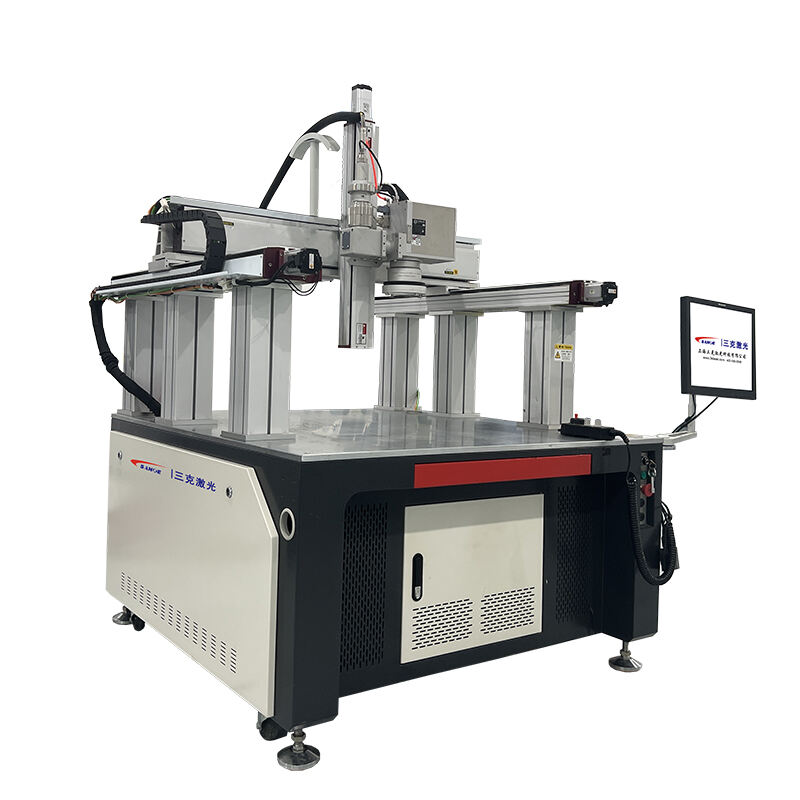Essential Safety Protocols for Industrial Laser Welding Operations
Operating a laser welding machine requires comprehensive safety measures to protect workers and maintain a secure working environment. These sophisticated tools harness intense laser power for precision welding, making proper safety protocols absolutely critical. Understanding and implementing the right precautions not only ensures operator safety but also maximizes the effectiveness of laser welding operations while complying with industry regulations.
Modern laser welding machines represent cutting-edge technology in manufacturing and metalworking. Their precision and efficiency have revolutionized welding processes across industries, from automotive manufacturing to aerospace applications. However, this advanced capability comes with inherent risks that must be properly managed through systematic safety measures.
Personal Protective Equipment Requirements
Eye Protection and Vision Safety
The most critical aspect of laser welding safety involves protecting the eyes from intense laser radiation. Operators must wear specialized laser safety goggles designed specifically for the wavelength of the laser welding machine being used. These goggles should meet international safety standards and maintain optimal optical density for proper protection.
Regular inspection of eye protection equipment is essential, as any damage or deterioration can compromise safety. Facilities should maintain a strict protocol for checking and replacing protective eyewear, ensuring that all personnel working near laser welding operations are adequately protected.
Protective Clothing and Gear
Beyond eye protection, operators need comprehensive body protection when working with a laser welding machine. This includes flame-resistant coveralls, heat-resistant gloves, and closed-toe safety shoes. The protective clothing should cover all exposed skin to prevent burns from reflected laser radiation or hot metal splatter.
Additional protective gear may include respiratory protection when working with materials that produce hazardous fumes during the welding process. All protective equipment should be regularly maintained and replaced according to manufacturer specifications and wear patterns.
Workspace Safety and Environmental Controls
Designated Operating Areas
A laser welding machine should only be operated in specially designated areas with appropriate safety barriers and warning signs. These areas must be clearly marked and access should be restricted to authorized personnel only. The workspace should be organized to minimize the risk of accidental exposure to laser radiation.
Proper ventilation systems are essential to remove potentially harmful fumes and particles generated during the welding process. The ventilation system should be regularly maintained and tested to ensure optimal performance and worker safety.
Emergency Safety Systems
Every laser welding facility must have comprehensive emergency systems in place. This includes easily accessible emergency stop buttons, fire suppression equipment, and first aid stations. Regular testing of these systems ensures their reliability when needed.
Emergency protocols should be clearly documented and posted in visible locations. All operators should be trained in emergency procedures and participate in regular safety drills to maintain readiness for potential incidents.
Training and Certification Requirements
Operator Qualification Standards
Operating a laser welding machine requires specialized training and certification. Operators must complete comprehensive safety training programs that cover both theoretical knowledge and practical skills. These programs should be updated regularly to reflect new safety standards and technological advances.
Certification requirements often include demonstrated proficiency in machine operation, safety protocols, and emergency procedures. Regular refresher courses help maintain operator competency and awareness of safety requirements.
Documentation and Compliance
Maintaining detailed records of operator training, equipment maintenance, and safety inspections is crucial for regulatory compliance. All safety procedures should be documented in standard operating procedures (SOPs) that are regularly reviewed and updated.
Regular safety audits help identify potential hazards and ensure continued compliance with safety regulations. These audits should include checks of equipment condition, protective gear, and operator adherence to safety protocols.
Maintenance and Regular Safety Checks
Equipment Inspection Protocols
Regular maintenance of laser welding machines is essential for safe operation. This includes daily visual inspections, scheduled maintenance checks, and periodic professional servicing. All safety features, including interlocks and emergency stops, must be tested regularly.
A comprehensive maintenance log should track all inspections, repairs, and replacements. Any issues identified during inspection must be addressed promptly to maintain safe operating conditions.
Safety System Verification
All safety systems associated with laser welding operations require regular verification. This includes testing of ventilation systems, emergency stops, warning lights, and other safety features. Documentation of these tests should be maintained for compliance purposes.
Regular calibration of safety monitoring equipment ensures accurate detection of potential hazards. This includes laser power meters, radiation detectors, and environmental monitoring systems.
Frequently Asked Questions
What type of laser safety goggles should be used with a laser welding machine?
Safety goggles must be specifically rated for the wavelength and power of your laser welding machine. Look for goggles with appropriate Optical Density (OD) ratings and certification marks from recognized safety organizations. Always consult the machine manufacturer's specifications when selecting protective eyewear.
How often should safety training be renewed for laser welding operators?
Most industry standards recommend annual refresher training for laser welding operators. However, additional training may be required when new equipment is installed or significant procedure changes are implemented. Some jurisdictions may have specific requirements for training frequency.
What emergency procedures should be in place for laser welding operations?
Emergency procedures should include immediate machine shutdown protocols, evacuation plans, and first aid responses for potential injuries. Facilities should maintain emergency contact information, clearly marked exits, and regularly tested alarm systems. All operators should be trained in these procedures and participate in periodic emergency drills.
 EN
EN
 AR
AR
 FR
FR
 DE
DE
 JA
JA
 KO
KO
 RU
RU
 ES
ES


